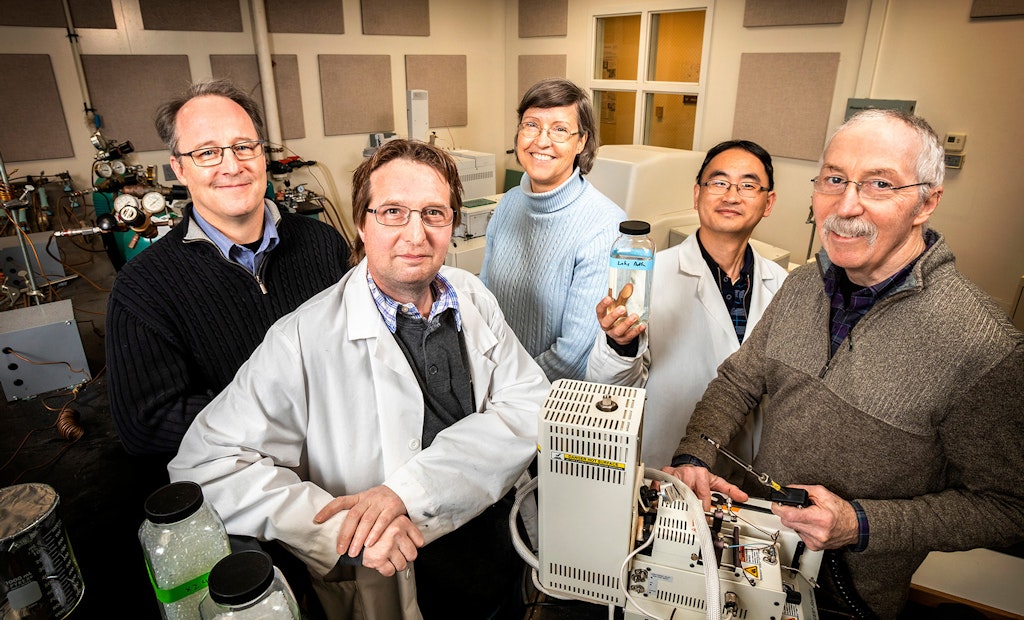
The University of Illinois-led study included researchers from the Prairie Research Institute. Pictured, from left, are Walton R. Kelly, John Scott, Nancy Holm, Wei Zheng and lead author Samuel V. Panno. (Photo By Fred Zwicky)
Microplastics contaminate the world’s surface waters, yet scientists have only just begun to explore their presence in groundwater systems. A new study is the first to report microplastics in fractured limestone aquifers, which account for 25 percent of the global drinking water...





